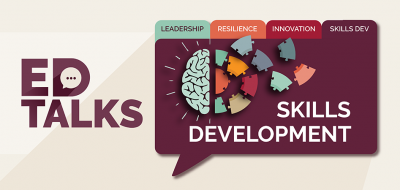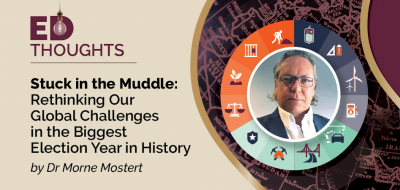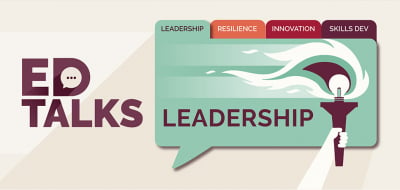#Winning – Why personal mastery is an important leadership skill
“Personal mastery goes beyond competence and skills… It means approaching one’s life as a creative work, living life from a creative as opposed to a reactive viewpoint” – Peter Senge, systems scientist
Whether it’s your CEO, a colleague or a friend, chances are there is one person you know who always wins at life. And they achieve this by understanding their thoughts, actions and purpose in life. This skill is known as personal mastery and… it can be learnt. Many top leaders across the world are aware that in order to lead a country, a company or even a team effectively, they need to learn how to lead themselves first. Easier said than done? Let’s break down the concept of personal mastery and the key steps to take in order to start winning at your own life.
What is personal mastery?
Peter Senge, a systems scientist from the United States, includes personal mastery as the fifth discipline in his book The Fifth Discipline: The Art & Practice of the Learning Organization (1990). Senge’s book focuses on team learning and problem solving using a system-based thinking method and he equates personal mastery with growth and learning. According to Start of Happiness, personal mastery can be defined as personal growth through principles of purpose, vision, belief, commitment and knowing yourself.
Additionally, Drotter, Charan and Noel (2001) developed the leadership pipeline model, which describes the path from worker to executive or top management. The authors, like Senge, believe that leadership starts with “learning to lead self” so each part of the trajectory in their model illustrates the major events in the life of a person who eventually becomes a leader. This trajectory represents the continuous personal growth in personal mastery of an individual and is based on a number of key principles that occur in the following order:
1. Establish and live your deep-seated values,
2. Be motivated by your personal vision and purpose, and
3. Hold creative tension between your vision and your current reality.
The five disciplines
Senge’s book focuses on five areas that create an ideal learning organisation. These are:
- Shared vision: An important aspect of an organisational culture that works is the vision shared by its employees. Sir Richard Branson’s Virgin brand is a good example of this discipline – even though the brand covers many industries and is available across the world, Branson and his senior managers engage regularly with the company’s on-the-ground employees to live the Virgin lifestyle in everything they do, encouraging both employees and consumers to find a purpose or aspect of their lives that aligns with the brand’s shared vision.
- Mental models: Senge refers to the beliefs, values, mindsets and assumptions of employees in a workplace as “mental models”. These models inform the ways that employees perceive the company and, in turn, reflects this image to the public. South African-based Liquid Telecom, an information and communications technology (ICT) company, recently underwent a complete organisational transformation under new leadership. The company’s new CEO believed that a more focused offering and a shift in mindset would propel it forward – and he was right with Liquid Telecom’s infrastructure now miles ahead of its competitors.
- Team learning: The core philosophy of this discipline is that teams “think together” in addition to working together. Custom publishing house Highbury Media’s editorial teams are large and employees are often required to work on multiple projects at the same time. However, through good communication and constant feedback loops within teams and with clients, the company has managed to not only create a shared vision about its products for employees but also a fast and efficient production cycle.
- Systems thinking: The clichéd phrase “the left hand doesn’t know what the right hand is doing” comes to mind when thinking of this discipline. Although the phrase originally appeared in the New Testament, the meaning in modern business terms often refers to teams of individuals working in silos instead of together. For example, SAP is a global software and business solutions company with a regional branch in South Africa. Although the branch operates independently, adjusting to the demands of its market, its management team still reports into a global team who observes the entire SAP system from afar, understanding the actions and consequences each regional branch plays and how they correlate with each other.
- Personal mastery: The fifth discipline refers to self-awareness and how an individual visualises their goal in relation to reality. In both her professional and personal lives, music icon Beyoncé seems to have achieved personal mastery. The singer’s trajectory has been quick and can be linked back to her vision of becoming a global popstar in her early days as a singer with R&B girl group Destiny’s Child. Additionally, Beyoncé’s last couple of albums have been more self-reflective – of herself, her marriage, her career – demonstrating the star’s ability to understand her behaviour and thoughts as well as those of the people around her.
Through Senge’s five disciplines, effective leadership can be defined as influence. Successful leaders have learnt first to influence themselves through their lifestyles, behaviour and interpersonal relationships. Setting a positive example becomes a greater reality for leaders who have first mastered themselves. The virtue of influence and example is that leaders need never spend time on getting their employees to buy into their ideas as they would have already bought into them by identifying with the positive traits the leader has displayed.
3 Ways to improve your personal mastery
The path towards personal mastery is never-ending. However, these steps will help you develop the skills required on your path to personal growth and learning. (Sourced from The Change Forum, Forbes and Start of Happiness.)
1. Define your goal
To master any task or activity, setting a clear vision provides a sense of direction. Whether your personal goal is achieving that promotion at work or giving back to your community, a goal or vision with a purpose is the first step in getting there.
2. Be mindful of your self and time
Whether it’s a calendar jam-packed with events or a flood of tasks filling your inbox, it’s important to take a step back to fully view what is happening around you in any given moment. Do this by identifying tasks that are important to you and setting time aside in your calendar to do these – anything from learning a new language to enjoying a cup of coffee with your favourite book.
3. Take action
The hardest part of any task is starting. Which is why taking positive action is so important. A Saturday at the office can be daunting, however, try tackling the most difficult task when your energy levels are high. For some people, this could be first thing in the morning; for others, late nights are more productive. By starting with the most difficult task, it will also be easier to complete tasks you’re more comfortable doing later on.
USB-ED recognises the importance personal mastery plays in developing future leaders. This is why we encourage our participants in our New Managers’ Development Programme to also complete the Management Development Programme and Senior Management Programme. All of these courses will help managers develop personal mastery skills and eventually tackle our Executive Management Programme. By following this programme outline, participants will partake in a systemic process and move from personal leadership to global leadership.
Prof Basil C Leonard is a leadership and EQ consultant.
written by





